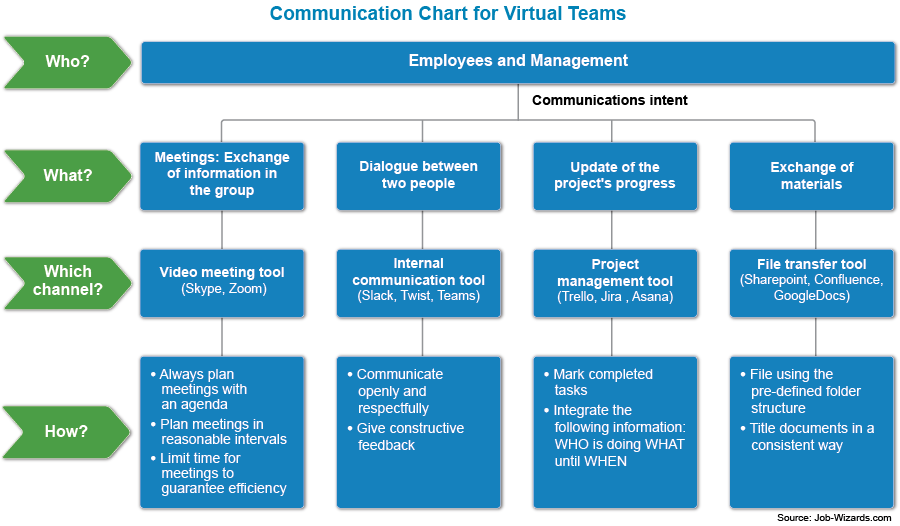Each day, as the confirmed Covid-19 cases rise across the United States, more state and local governments announce restrictions on the public’s ability to congregate to help curb the spread of the novel coronavirus and to “flatten the curve.”
To date, nearly 73 million California, New York and Illinois residents are under a “stay-at-home” order until further notice, exempting only “essential” workers such as health care professionals, bank tellers and garbage collectors. Pennsylvania ordered all “non-life-threatening” businesses to close, or face enforcement actions starting tomorrow. Of the remaining states and territories, 46 have closed schools and 37 have closed or limited bars, restaurants and gyms.
For non-essential workers, public health officials are urging U.S. employers nationwide to allow teleworking and are encouraging people to wash hands regularly and to adopt prudent “social distance” behaviors: maintain a 6-foot distance from other people and limit outings to essential-only trips to the grocery store and the pharmacy.
The Centers for Disease Control (CDC) published Interim Guidance for Businesses and Employers, which recommends “flexible worksites (e.g., telecommuting) and flexible work hours (e.g., staggered shifts), to increase the physical distance among employees and between employees.”
Under normal circumstances, employers usually have months to prepare telework policies, distribute necessary technology and conduct training. But these decisions are being made, or being mandated, with little time to prepare. Even employers with existing telecommuting policies aren’t experienced in managing an entirely remote workforce.
The Covid-19 pandemic is a unique, fast-moving situation affecting how employees work and how managers manage. But its uniqueness may produce positive outcomes, according to Emily Medvin, Ph.D., research scientist at HumRRO in Alexandria, Va., whose research has focused on teleworking, particularly its effect on manager-employee relationships.
“The uncertainty of telework usually revolves around the fact that some people work remotely and some don’t,” she explains. “With the whole team teleworking, you don’t have to worry about your manager forgetting you exist because you’re the only one not in the office, or that you’re missing out on important, informal interactions or that your co-workers harbor some jealousy over your arrangement.”
Furthermore, when it’s in response to a public health crisis, urged on by government officials and public health experts, any prior resistance by managers to allow teleworking quickly dissipates, Medvin notes.
The next few weeks may enhance manager-employee relationships, build trust and encourage more teleworking post-crisis, if the situation is handled well. Below are tips and resources to help you manage your newfound virtual work environment.
Leverage Technology
Beyond the basics of ensuring employees have laptops and access to company email, robust, collaborative software tools can help simulate in-office interactions. Many options are free, low-cost or offer a free trial period. Consider these tools to meet your specific needs:
Document sharing:
Employers may not have time to provide formal training on the software before transitioning to telework, though most providers offer video training through their websites. Encourage workers to view the videos and then be available for questions as people increase their familiarity with the new tools. To prepare for regular video conferences, it’s helpful to share some “dos and don’ts.”
If employees have employer-provided laptops and don’t have administrative access to download these tools, work with the IT department to allow temporary access.
Employees with disabilities may need to bring home special equipment to perform their work virtually.
Establish Rules of Engagement
Communicating which technology for what purpose is important to establish upfront. Job Wizards created a useful chart to help guide managers and employees.
Be thoughtful about how you use each tool and determine the purpose of your communications. If it’s to ask a simple question of one person or a team, or you want to connect with employees casually, use Slack, Twist or Teams. If you have a more complicated issue that is too long or too sensitive to convey in writing, arrange a video call with Skype or Zoom. For ongoing task updates that need to be shared with other team members, project management tools are effective. Daily check-ins between manager and employee are sometimes best via phone or video call. But if that’s not feasible, use email or chat tools. Weekly team updates can be delivered via video conferences and recorded in case someone can’t attend so they can watch later. When conducting weekly team meetings, encourage use of these collaborative tools and give examples of how they are being used effectively.
“Richer media forms tend to work better when working virtually with others,” adds Medvin. “Simulate face-to-face interactions as much as possible. While using webcams is the most effective technique, messaging through Skype or Slack can also emulate the kind of back-and-forth conversations you would experience if face-to-face, without needing to be on camera.”
For client communications, you may need to update contact information and establish backup points of contact in case someone is unreachable. Given the changes to everyone’s work schedule, information sharing becomes more important among team members so that anyone can step in and resolve an issue if needed.
Managing Virtually
Managing virtually is not simply a matter of replacing face-to-face interactions with technology, especially given how critical effective management is to enhancing remote employees’ satisfaction levels. Effective virtual managers will:
- Set expectations. Managers need to be clear with remote employees about what is expected of them in terms of deliverables, when they need to be available, how often to provide updates and how quickly they need to respond to inquiries. When employees are clear about what is expected of them, they are more likely to produce high quality work.
- Avoid micromanaging. When managing remote employees, it’s tempting to micromanage by monitoring employees too closely and requesting status updates more frequently than usual or than is necessary. Just because employees are working from home doesn’t mean they are binge-watching Netflix or playing with their cats all day. Focus on results, just as you would in a traditional work arrangement. “An important message a manager can give at this time is to say, ‘We trust that you are going to get your work done,’” says Medvin.
- Use technology responsibly. Avoid constant messages that are disruptive and undermine trust. “A lot of remote workers feel like they constantly need to be ‘visible’ in their digital workspaces to ‘prove’ that they are working,” a study by Trello found. “They feel they need to be present for every discussion in chat or can’t let a notification go unanswered for more than a few minutes. This pressure adds unnecessary anxiety. Instead of being able to do their deep work, they are constantly worrying about how their contributions are perceived.” Managers can alleviate this pressure by sticking to clearly set work times. Also, model good behavior by not jumping on every chat message immediately, placing an “away status” on technology when concentrating on a project or taking a break, and not emailing employees in the middle of the night.
- Be flexible. With more school closings, many employees will be juggling childcare along with work responsibilities. Ask employees how they are affected by school or other closures and how that affects their schedule or ability to perform. Managers with school-aged children can set a good example by being transparent about when and how often they will be available. This will relieve some stress and guilt from employees about managing both responsibilities.
- Meet targets. For telework relationships to work, employees need to know their managers are meeting their targets and are following through on the tasks they need completed to do their jobs effectively. In terms of modeling competence, managers need to lead by example. That means hitting performance targets and being responsive to internal and external clients so that employees aren’t forced to pick up the slack.
- Give feedback. In a remote work arrangement, out of sight does not mean out of mind. Managers need to find ways to give feedback virtually. One-on-one conversations between managers and remote employees provide an opportunity to give constructive feedback and praise. Dedicate time to highlight employee successes during team meetings as well.
Mental Health Support
Constant news about the rise in Covid-19 cases can induce stress and anxiety, while working from home may cause feelings of isolation among employees. Managers need to check in on the status of employees’ mental health in addition to their work status. “Show that you care about their well-being,” Medvin says. “Ask how they are handling the situation emotionally, and if there’s anything you can do to help. Sometimes just asking is enough to make employees feel valued.”
Other ways to support employees’ mental health include:
- Reduce uncertainty. Leaders should attempt to remove as much uncertainty from the situation that they can. Consistently inform employees about the financial health of the company, even if the news in the short-term is bad as clients scale back or business declines in response to Covid-19 restrictions. Assure employees that the company is doing everything it can to keep paychecks coming. If layoffs are necessary, be honest and upfront as soon as possible. Deciding when to end teleworking may be uncertain, but the decision-making process shouldn’t be. “Let employees know that you will update them weekly on the status of the teleworking arrangement and what factors the leadership team considers each week when making the decision,” Medvin advises.
- Give thanks. Remember to thank employees for their flexibility and patience in working under the Covid-19 guidelines. Also, commend them for being resilient in handling the unusual circumstances and being resourceful in meeting their performance goals.
- Focus on the positive. Research continues to support the importance of mindset to the success or failure of any work initiative, Medvin says. “Whether you view something as enhancing or debilitating can determine the outcome.” Managers can put a positive spin on the sudden need to work remotely by asking:
- What can we learn from this arrangement?
- How can we make working virtually more effective long-term?
- Can we test different features of collaborative technologies for ourselves and for our clients to use after the health crisis?
- EAPs. Encourage employees to find ways to take care of their mental health by turning off the computer for a mental break or going for a long walk or doing yoga or other exercises. If employees continually feel overwhelmed by stress, anxiety or isolation caused by the Covid-19 outbreak, refer them to the employee-assistance program if your organization provides it.
Change is difficult under normal circumstances, so when fears of a pandemic and disruption to daily life are added to it, it’s even more daunting. These tips and tools can help manage the transition by adapting work processes, communications and skillsets to the virtual environment. When things eventually return to normal, organizations may find that teleworking enhanced teamwork, relationships and productivity, and they may decide to increase its use to create cost-savings, better work-life balance for employees, higher employee satisfaction levels and increased retention.
Additional Resources:
SHRM Covid-19 website:
https://www.shrm.org/ResourcesAndTools/Pages/communicable-diseases.aspx
SIOP remote work resources:
https://www.siop.org/Business-Resources/Remote-Work
OSHA guidance for workplaces:
https://www.osha.gov/Publications/OSHA3990.pdf
U.S. Chamber of Commerce toolkit:
https://www.uschamber.com/coronavirus-response-toolkit
U.S. Chamber of Commerce customizable workplace flyer:
https://www.uschamber.com/sites/default/files/coronavirus_customizable_flyer-final_nologo.pdf
CDC Covid-19 website:
https://www.cdc.gov/coronavirus/2019-ncov/index.html
CDC Guidance for Employers:
https://www.cdc.gov/coronavirus/2019-ncov/community/guidance-business-response.html
WHO Covid-19 website:
https://www.who.int/health-topics/coronavirus
State and local public health websites:
https://www.cdc.gov/publichealthgateway/accreditation/departments.html
National Governors Associations updates on Covid-19 actions by state:
https://www.nga.org/coronavirus/#states








